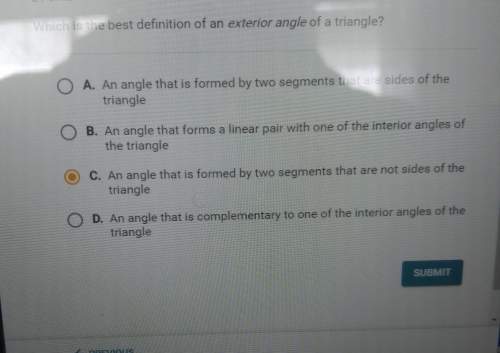
Mathematics, 23.06.2019 19:00, victoriahuntley12148
Determine which sequences of transformations could be applied to the parent function f(x) = x to obtain the graph of g. shift down 1 unit, reflect over the x-axis, and then vertically stretch by a factor of 3 shift right 1 unit, reflect over the x-axis, and then vertically stretch by a factor of 3 reflect over the x-axis, vertically stretch by a factor of 3, and then shift down 1 unit shift left 2 units, reflect over the x-axis, and then vertically stretch by a factor of 3 reflect over the y-axis, vertically stretch by a factor of 3, and then shift down 1 unit shift right 1 unit, reflect over the y-axis, and then vertically stretch by a factor of 3

Answers: 2
Other questions on the subject: Mathematics


Mathematics, 21.06.2019 19:00, tylerwayneparks
Solving systems of linear equations: tables represent two linear functions in a systemöwhat is the solution to this system? 0 (10)0 (1.6)0 18,26)0 18-22)
Answers: 1

Mathematics, 22.06.2019 00:00, deidaraXneji
Table of values relation g values x, y 2,2 /3,5 /4,9 /5,13 which ordered pair is in g inverse? a(-2,2) b(-3,-5) c)4,9) d( 13,5)
Answers: 3

Mathematics, 22.06.2019 01:30, justsuz72p71a21
Given the functions, f(x) = 2x^2 - 1 and g(x) = 5x, find f(g(x)) and g(f(
Answers: 2
Do you know the correct answer?
Determine which sequences of transformations could be applied to the parent function f(x) = x to obt...
Questions in other subjects:






Mathematics, 31.07.2020 06:01











